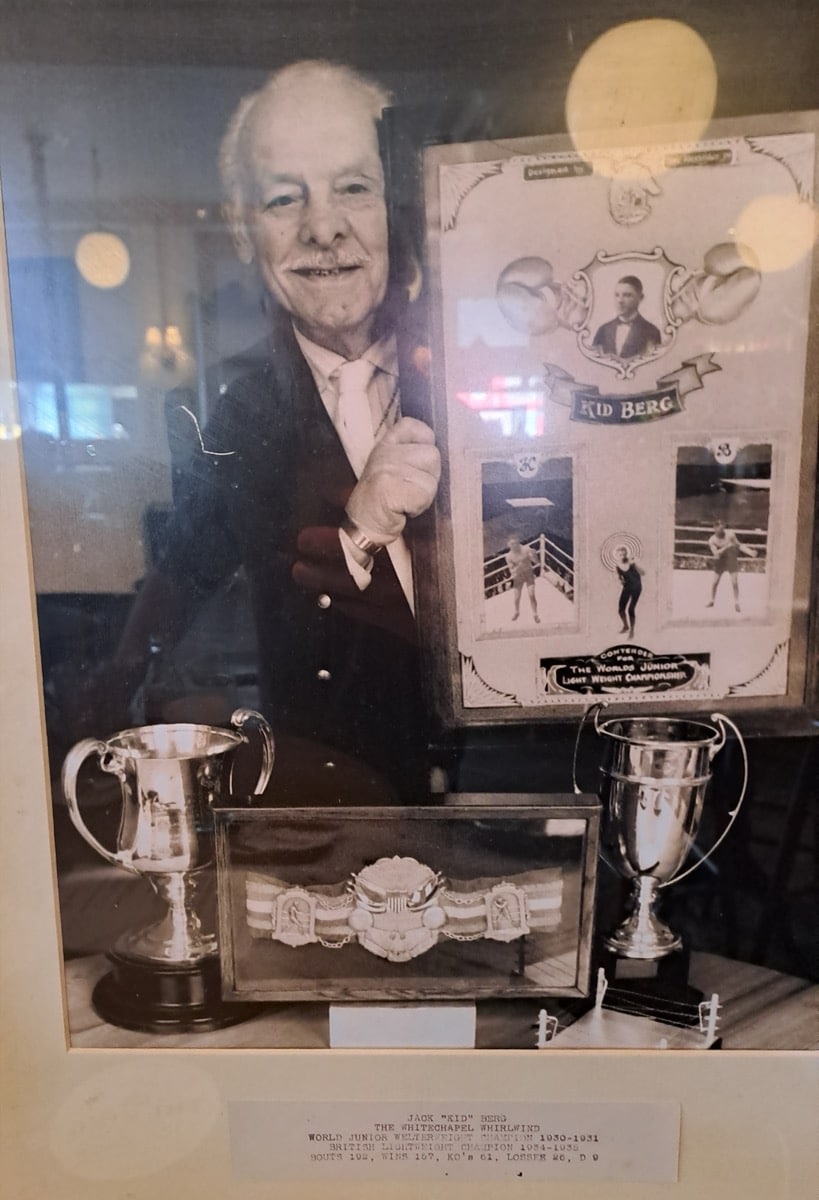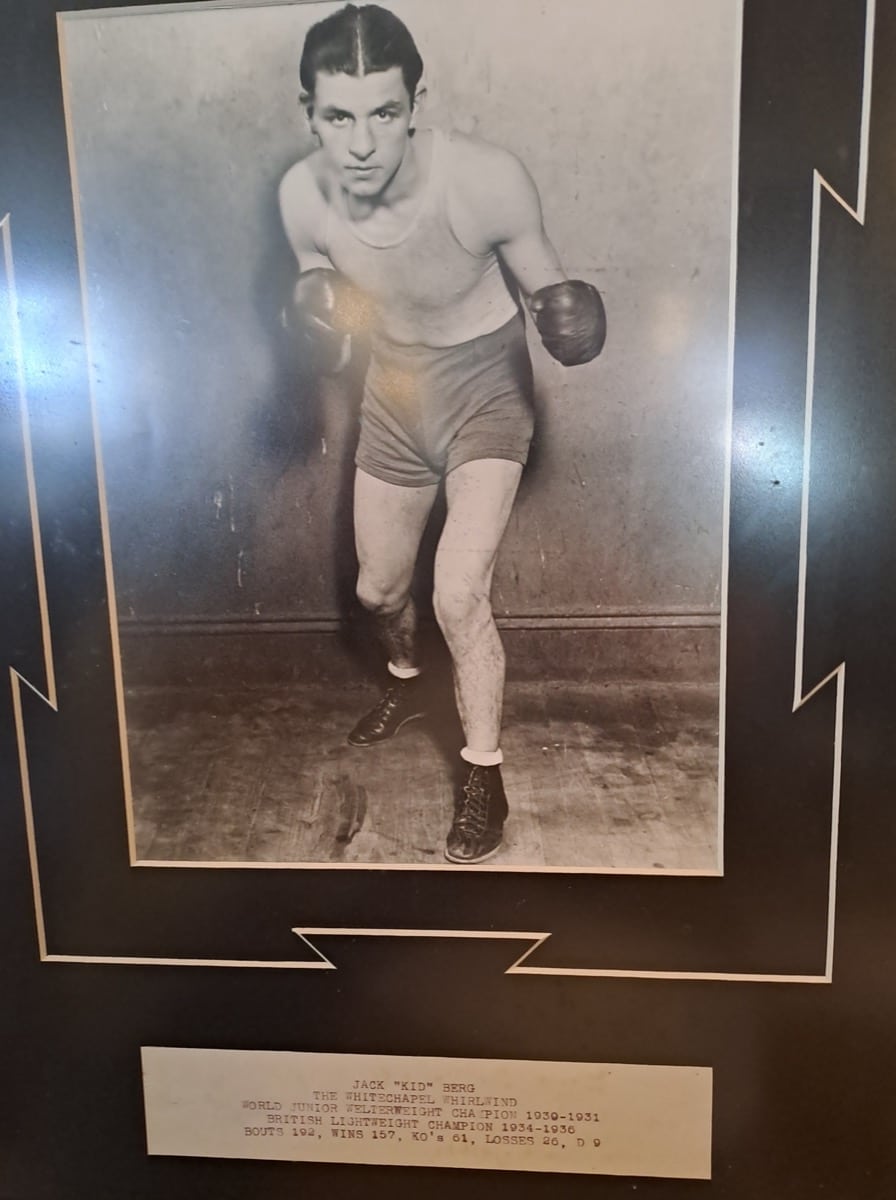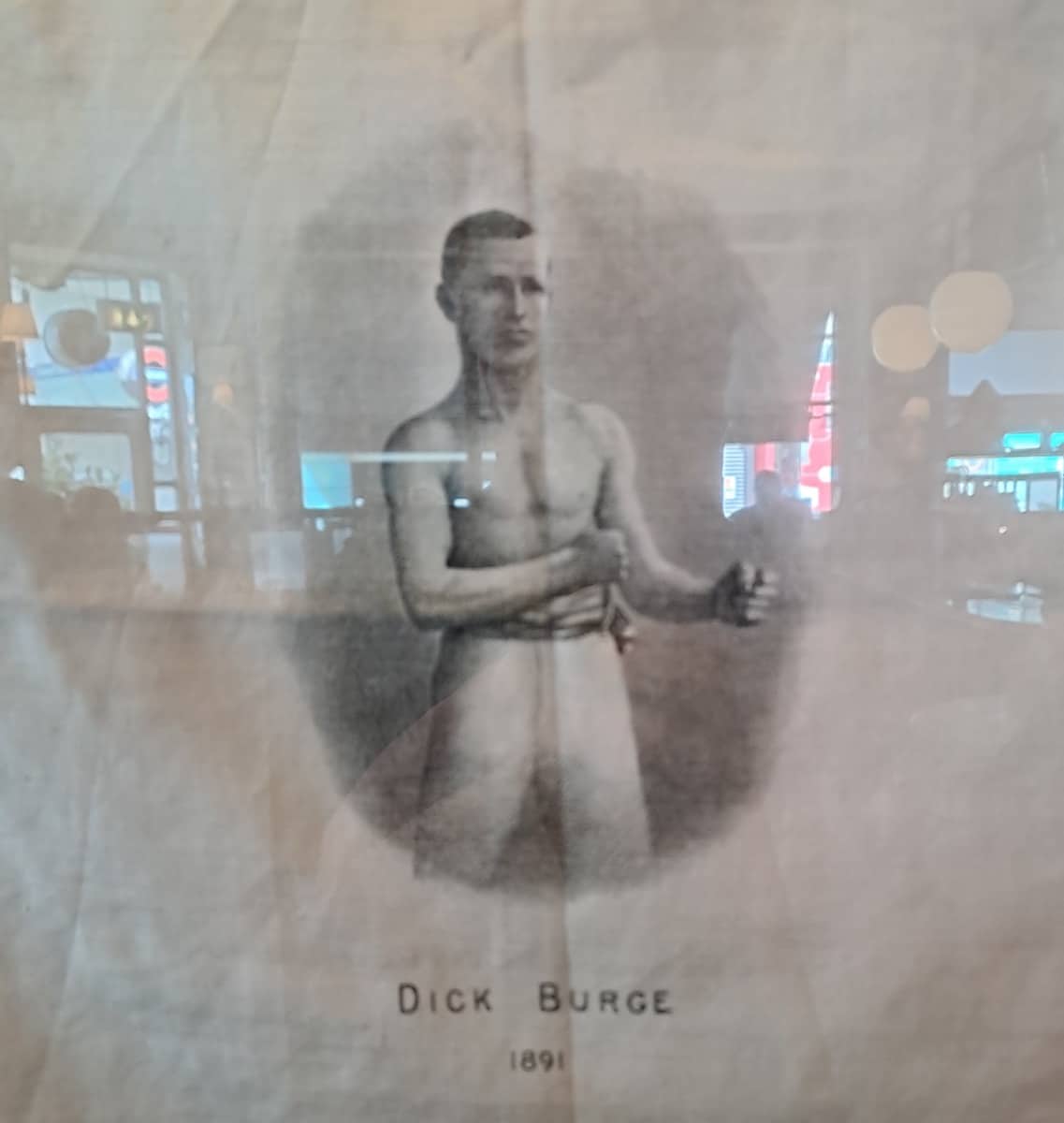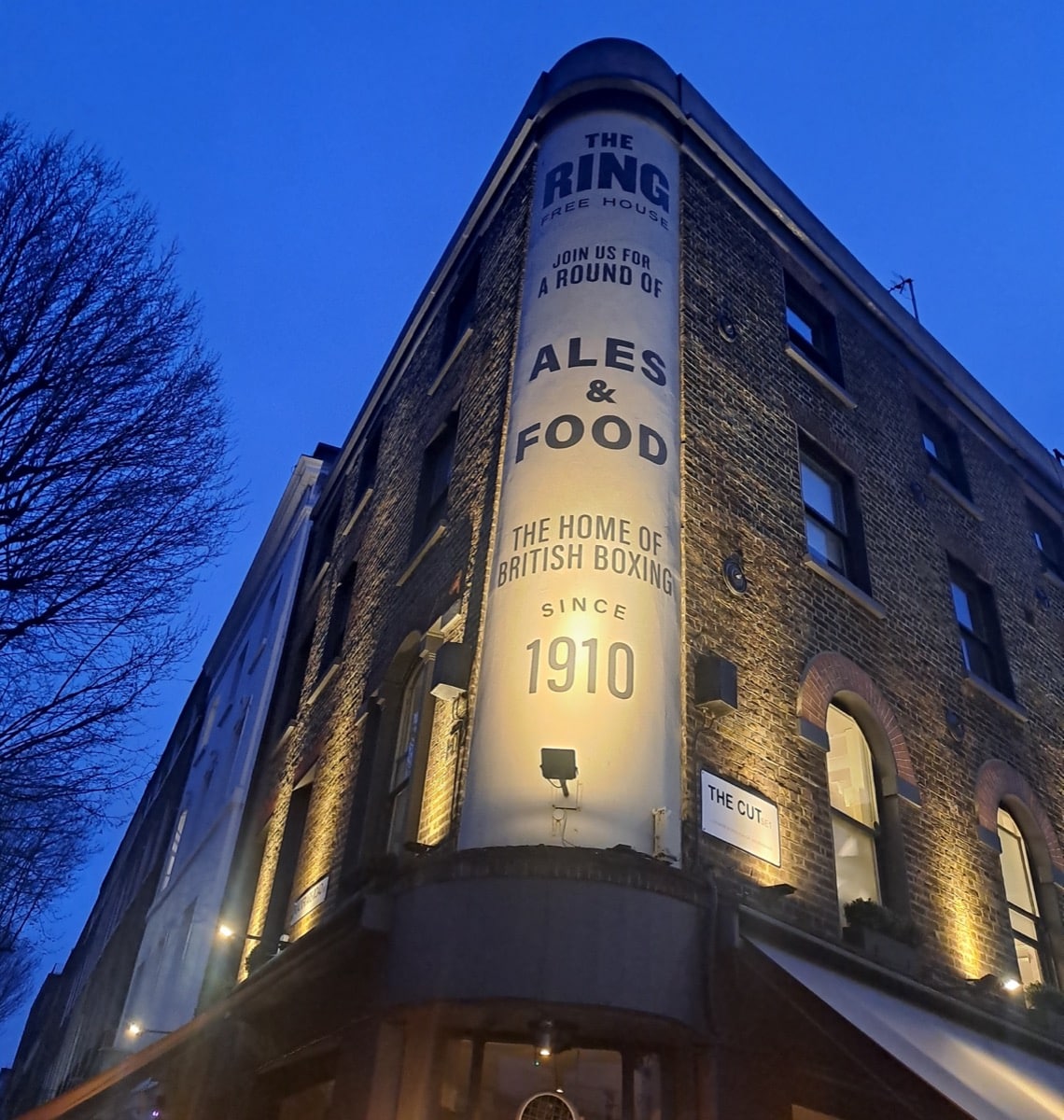Whilst on a recent trip to London, this ESB contributor paid a visit to a simply fascinating public house named The Ring. Nothing at all to do with “The Bible of Boxing,” this pub, located on Blackfriars Road in Southwark, London, pays tribute to the long-since vanished arena that once stood across the road. The arena opened its doors in 1910, and many great fighters boxed there – including Jack “Kid” Berg, Len Harvey, Ted “Kid” Lewis, and others.
While the list of fans who were in attendance at some of the fights staged at “The Home of British Boxing,” as it is proudly written above the entrance to the pub, includes Charlie Chaplin, Winston Churchill, and George Bernard Shaw. Upon entering the pub today, a visitor is instantly impressed by all the old black-and-white photos of former ring warriors that adorn the walls, with some old and terribly worn gloves hanging above the bar.

The arena, the first indoor boxing arena for the working classes (“our place would be no place for nobs,” its proud owner stated), opened its doors in 1910, but the building was originally built in 1783. Originally a Chappel, the oddly shaped building was the creation of the eccentric Rev. Rowland Hill, who designed it so the circular building had no corners where the devil may hide.
Decades later, the building was transformed into a boxing arena, its opening day being May 14th of 1910. Former English lightweight champion Dick Burge, along with his New Yoker wife Bella (who came to England at age four), oversaw the development, and in time the arena did indeed become the Home of British Boxing.
Burge, a fascinating character in his own right, set about transforming the Chappel with Bella shortly after he had been released from prison, with him having served time for bank fraud. The two worked tirelessly – with the duo also opening a soup kitchen during these incredibly tough times – and it wasn’t long before their hard work paid them, and British boxing, back.
Sadly, Burge, who enlisted to serve, died shortly before the first world war ended, aged just 50. Burge’s dying wish to Bella was that she keep the area going. And so she did. Bella, a genuine legend herself, took over in 1918, with her going on to become the first ever female boxing promoter. Also, if ever a fan got out of line, or more often, got too drunk, she would attend to bouncer duties herself! Soon enough, Bella would be known throughout the area as “Bella of Blackfriars.”

At it’s pomp, The Ring even hosted the Prince of Wales, a keen fight fan who attended a big fight there; between Jack Hood and Len Johnson. Today, the friendly staff at The Ring Pub, say there were sometimes fights fought quite literally on the cobbles, outside the arena and therefore not recorded. History records how fight fans would throw “browns” (pennies) at a boxer if he fought particularly well.
Prior to WW II, Bella and the arena fell on hard times, with her having to sell her jewellery in an effort at keeping the place going. Sadly, when WW II came, the arena suffered a direct hit, this in October of 1940. All but demolished, the remains of the building were cleared away in 1941.
Today, all that is left of The Ring and its fine legacy is the pub that was built to both honour and remember. Standing today where the arena once stood, is a hi-tech building known as “The Palestra.” Writers have pointed out how fitting the name of the current building is, as it an Ancient Greek term for wrestling.
If you are ever in London and are an avid boxing fan, a visit to the pub that loving pays homage to the long-since gone fighters who plied their trade just a stone’s throw away across the road, is well recommended.

Click here to subscribe to our FREE newsletter
Related News:
- Usyk vs Wilder: Who Wins?
- Iglesias’ Rise to Mandatory Status Came as Crawford Weighed Retirement
- The Fight Was Ordered. Giyasov Is Still Waiting
Last Updated on 04/03/2024


